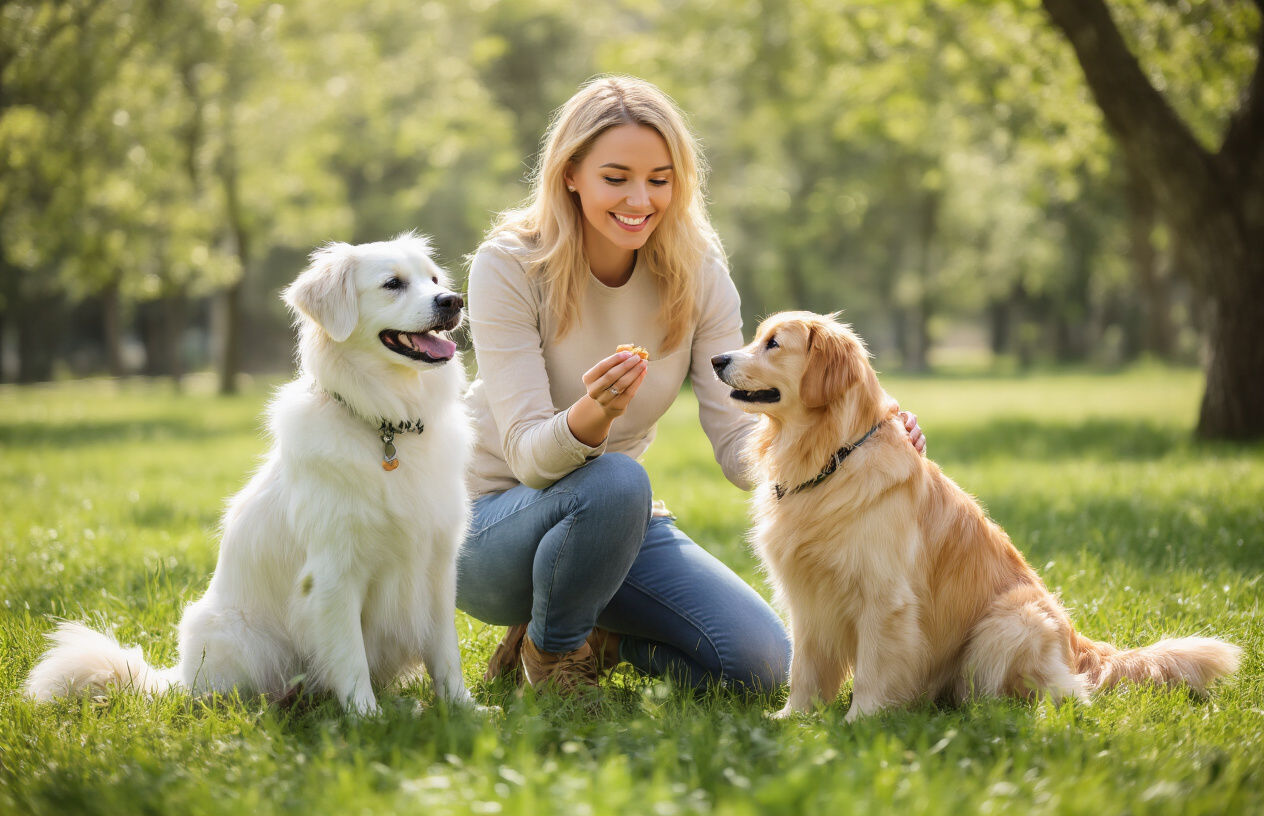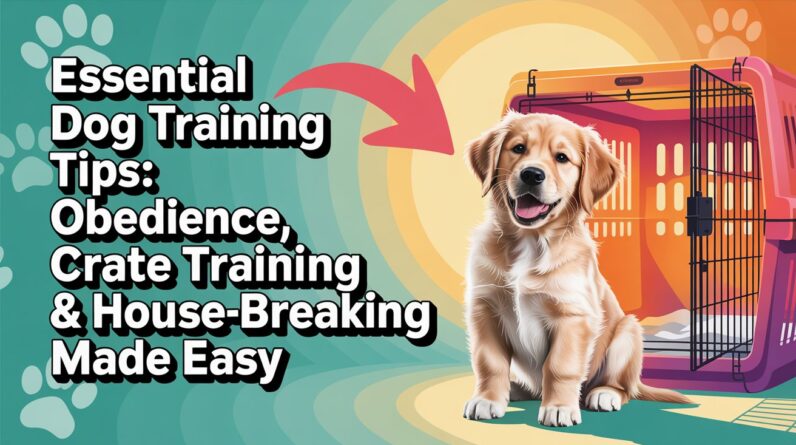This guide is perfect for new puppy parents, frustrated owners dealing with behavioral issues, and anyone ready to move beyond basic commands to build a deeper connection with their dog. You’ll discover how to train a dog using methods that professional trainers rely on daily.
We’ll cover essential dog training techniques like mastering positive reinforcement dog training for faster, lasting results. You’ll learn how consistent communication creates the foundation for all successful dog obedience training. Plus, we’ll dive into timing strategies that accelerate your dog’s learning and help you address problem behaviors before they become deeply rooted habits.
These effective dog training methods focus on setting both you and your dog up for success through practical, science-backed approaches that work in real-world situations.
Time Your Rewards Within 3 Seconds for Maximum Impact
The magic window for effective positive reinforcement dog training happens in just three seconds. When your dog performs the desired behavior, you have this brief moment to mark and reward their success before they mentally move on to something else. Missing this window means your dog won’t connect the reward with their action, making your training efforts less effective.
Professional dog trainers swear by this timing because dogs live in the present moment. They don’t think, “Oh, I sat down five seconds ago, so this treat must be for that.” Instead, they associate rewards with whatever they’re doing right now. If you wait too long to reward a “sit,” your dog might think they’re being rewarded for looking at a squirrel or sniffing the ground.
Use a clicker or a consistent marker word like “yes” to capture the exact moment your dog succeeds. This sound becomes a bridge between the behavior and the treat, helping your dog understand precisely what earned them the reward.
Use High-Value Treats That Motivate Your Specific Dog
Not all treats are created equal in your dog’s mind. While generic dog biscuits might work for basic training, high-value treats become your secret weapon for challenging training sessions and breaking through stubborn behaviors. These special rewards should be something your dog would choose over their regular kibble every single time.
Common high-value options include small pieces of cooked chicken, freeze-dried liver, cheese cubes, or even a favorite toy for play-driven dogs. The key is finding what makes your specific dog’s tail wag with excitement. Some dogs go crazy for hot dog pieces, while others prefer the crunch of freeze-dried treats.
Keep these premium rewards exclusively for training sessions. If your dog gets chicken with dinner every night, it won’t feel special during obedience training. Reserve these treats for when you really need your dog’s full attention and enthusiasm.
Size matters too – treats should be small enough that your dog doesn’t spend time chewing while missing your next command. Think pea-sized portions that disappear quickly, keeping the training momentum flowing smoothly.
Combine Verbal Praise with Physical Rewards
Dogs are social creatures who crave approval from their human pack leaders, making verbal praise a powerful component of effective dog training methods. Your excited “good boy!” or “yes!” carries emotional weight that treats alone cannot provide. When you combine enthusiastic verbal praise with physical rewards, you’re speaking to both your dog’s stomach and their heart.
The tone of your voice matters more than the actual words. Dogs respond to high-pitched, excited tones that convey genuine happiness about their success. Your enthusiasm becomes contagious, making your dog more eager to repeat behaviors that earn such positive reactions from you.
Physical rewards extend beyond treats to include belly rubs, ear scratches, or brief play sessions with a favorite toy. Some dogs value a good chest scratch more than any edible reward. Watch your dog’s body language to discover their preferred types of physical affection – some love full-body pets while others prefer gentle head scratches.
Mixing up your reward types keeps training sessions interesting and prevents your dog from becoming fixated on just one type of motivation. This variety also helps you maintain your dog’s engagement when you don’t have treats readily available.
Gradually Reduce Treat Dependency While Maintaining Enthusiasm
Smart dog training techniques involve creating dogs who obey because they want to please you, not just because they expect food. This transition from treat-dependent to intrinsically motivated behavior requires patience and strategic planning, but it’s essential for long-term success.
Start by switching from continuous reinforcement to intermittent reinforcement once your dog reliably performs a command. Instead of treating every successful “sit,” reward every second or third success. This unpredictability actually strengthens the behavior because your dog never knows which attempt will pay off.
Replace some treats with life rewards – activities your dog naturally enjoys. A successful recall at the dog park might earn the reward of being released to go play again. A perfect “stay” could be rewarded with permission to greet a friendly stranger. These real-world rewards teach your dog that good behavior leads to good things happening.
Always maintain verbal praise and physical affection even when reducing treats. Your dog should never feel like their efforts go unnoticed. The goal isn’t to eliminate rewards entirely, but to create a dog who works for your approval and the occasional surprise treat rather than expecting payment for every single command.
Establish Clear Communication Through Consistent Commands
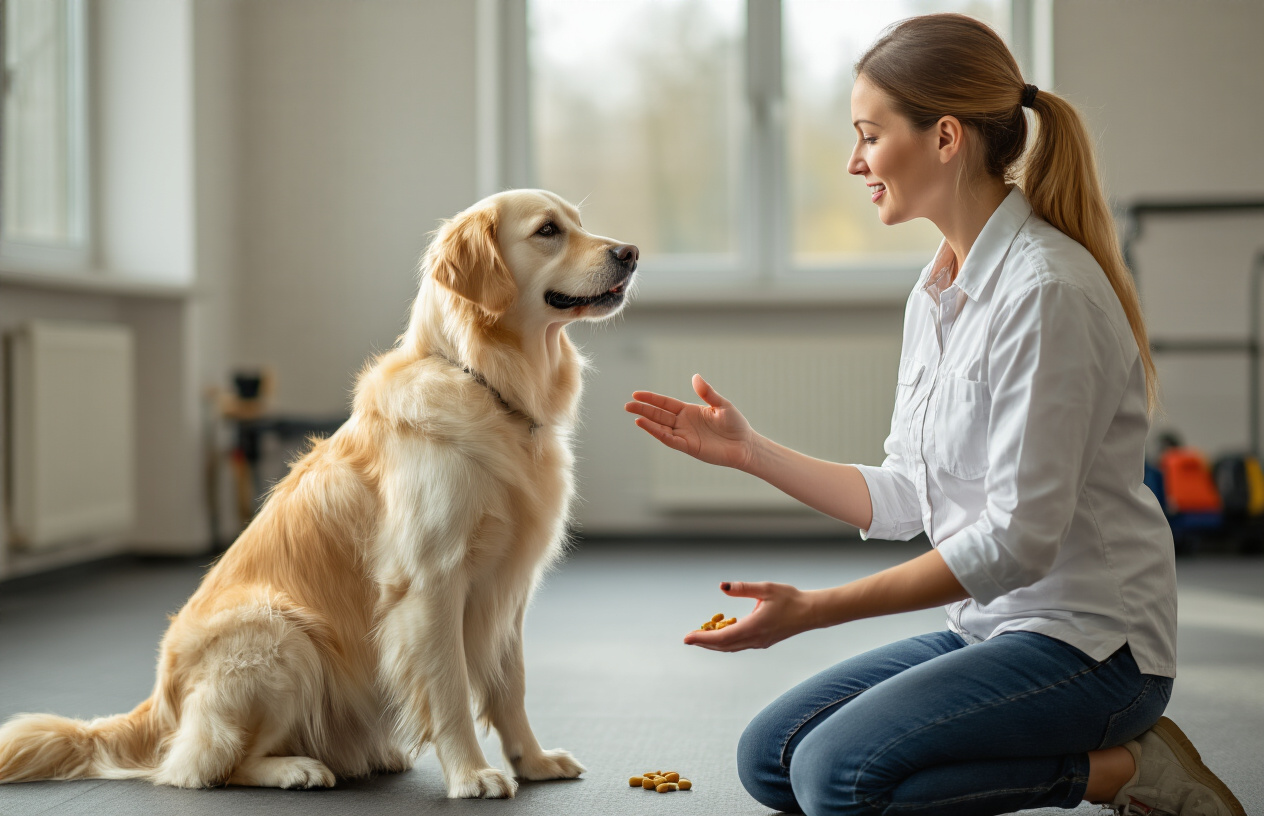
Choose Simple One-Word Commands for Each Behavior
The foundation of successful dog training tips starts with crystal-clear command selection. Your dog’s brain processes single-word commands much faster than complex phrases. Instead of saying “Please sit down right now,” stick with a firm “Sit.” Dogs respond better to commands like “Stay,” “Come,” “Down,” and “Heel” because these words are distinct and easy to distinguish from regular conversation.
Pick commands that sound different from each other. Avoid choosing “Stay” and “Wait” for the same behavior, as they sound too similar and will confuse your dog. Create a family command dictionary and stick to it religiously. If you choose “Off” for jumping behavior, never switch to “Down” or “Get off” later.
Consider your dog’s natural tendencies when selecting commands. High-energy breeds might respond better to sharp, quick commands like “Stop” rather than drawn-out words. Some professional dog training techniques recommend using commands in different languages to avoid confusion with everyday conversation.
Ensure All Family Members Use Identical Verbal Cues
Consistency across all household members makes or breaks your dog training success. When Dad says “Down” but Mom says “Lie down” and the kids yell “Get down,” your dog receives mixed signals that slow learning and create frustration.
Hold a family meeting to establish your command vocabulary before starting any dog obedience training program. Write down each chosen command and post the list where everyone can see it. Practice saying the commands together so everyone uses the same tone and emphasis.
Children especially need coaching on proper command delivery. They often get excited and string multiple commands together or change their voice pitch dramatically. Teach them that effective dog training methods require calm, confident delivery every single time.
Create accountability by assigning each family member specific training sessions. This ensures everyone gets practice using the agreed-upon commands correctly and helps identify anyone who might be inadvertently undermining the training process.
Match Your Tone and Body Language to Reinforce Messages
Your dog reads your entire communication package, not just your words. A cheerful “Stay” while you’re bouncing around sends mixed messages that confuse your pet. Your voice tone should match the command’s purpose – firm for “Stop,” encouraging for “Come,” and calm for “Stay.”
Body language speaks louder than words in dog behavior training. Stand tall and confident when giving commands. Avoid crouching or leaning forward, which dogs interpret as play signals. Keep your hands steady and use deliberate gestures that support your verbal cues.
Watch your facial expressions too. Dogs are incredibly skilled at reading human emotions through facial cues. A stressed or frustrated expression undermines even the most perfectly delivered command. Practice delivering commands with a neutral, confident expression in the mirror before working with your dog.
Timing your body language with your verbal commands creates powerful communication. Point toward the ground as you say “Down,” or step backward while calling “Come.” This synchronized approach accelerates learning and builds stronger communication bonds between you and your dog.
Perfect Your Timing to Accelerate Learning
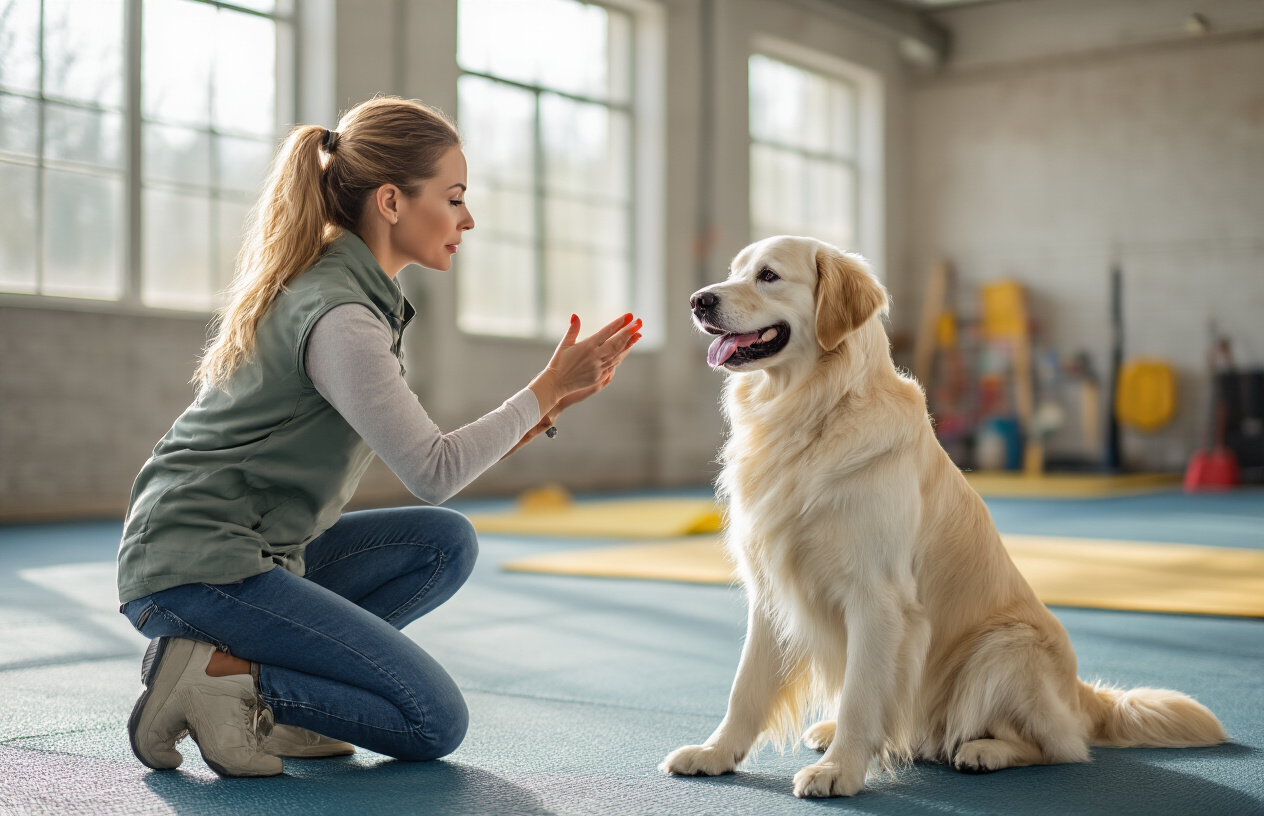
Mark desired behaviors the instant they occur
The split second your dog performs the correct behavior is your golden window for effective dog training. Your dog’s brain creates the strongest neural connections when the reward follows the action immediately. This means you need to be ready with your praise, treats, or marker the moment your pup sits, stays, or comes when called.
Think of timing like taking a perfect photograph – you have just one moment to capture it right. When your dog sits on command, that treat needs to appear within 1-3 seconds maximum. Any longer and your dog starts wondering what exactly earned them that reward. Was it the sitting, the looking around afterward, or maybe that little tail wag?
Professional dog trainers know that precise timing separates successful training from frustrating sessions that drag on for months. Your dog experiences the world in real-time, so delayed rewards lose their teaching power fast. Instead of thinking “Oh, I’ll reward them in a few seconds when I finish this,” make marking the behavior your immediate priority.
Avoid delayed corrections that confuse your dog
Nothing sabotages dog training faster than corrections that come too late. Walking into a room and scolding your dog for something that happened even five minutes ago creates confusion and anxiety rather than learning. Your dog genuinely has no idea what they’re being corrected for.
Dogs live in the present moment, which means their understanding of cause and effect works on a much shorter timeline than ours. When you discover chewed shoes an hour after the fact, your dog has already moved on mentally. Correcting them now teaches them that your arrival home is scary, not that chewing shoes is wrong.
The most effective dog behavior training happens when you catch behaviors as they unfold. If you can’t address a problem behavior immediately, skip the correction entirely and focus on prevention next time. Set up your environment better, provide appropriate alternatives, or increase supervision during times when problem behaviors typically occur.
Use clicker training for precise timing feedback
Clicker training revolutionizes your timing because the click sound marks the exact moment your dog does something right. This small device bridges the gap between the behavior and the treat, giving you superhuman timing abilities. The click becomes a promise that good things are coming.
The beauty of clicker training lies in its precision. While fumbling for treats or getting your voice ready for praise, you might miss the perfect moment. But a click happens instantly, capturing that exact second when your dog’s bottom hits the ground or their paws stay planted in a stay command.
Start by charging the clicker – clicking and immediately following with treats until your dog’s ears perk up at the sound. Once they understand that click equals reward, you can mark behaviors with scientific precision. Click for eye contact, click for loose leash walking, click for calm greetings. The timing becomes effortless.
Practice split-second decision making during training sessions
Quick decision-making during training separates good dog owners from great trainers. You need to read your dog’s body language, assess their performance, and decide whether to mark, redirect, or wait – all in real-time. This skill develops through deliberate practice and attention.
Watch your dog closely during training sessions. Are their ears forward and engaged, or are they getting distracted? Is that sit attempt close enough to reward, or should you wait for better effort? These micro-decisions shape your dog’s understanding of what you want.
Start with simple exercises and focus entirely on your timing rather than complex behaviors. Practice clicking or saying “yes” the instant your dog looks at you. Work on marking the moment their bottom touches the ground during sit training. Build your reflexes with repetition until good timing becomes automatic. Your improved decision-making skills will accelerate your dog’s learning and make training sessions more productive for both of you.
Create a Structured Training Schedule That Works
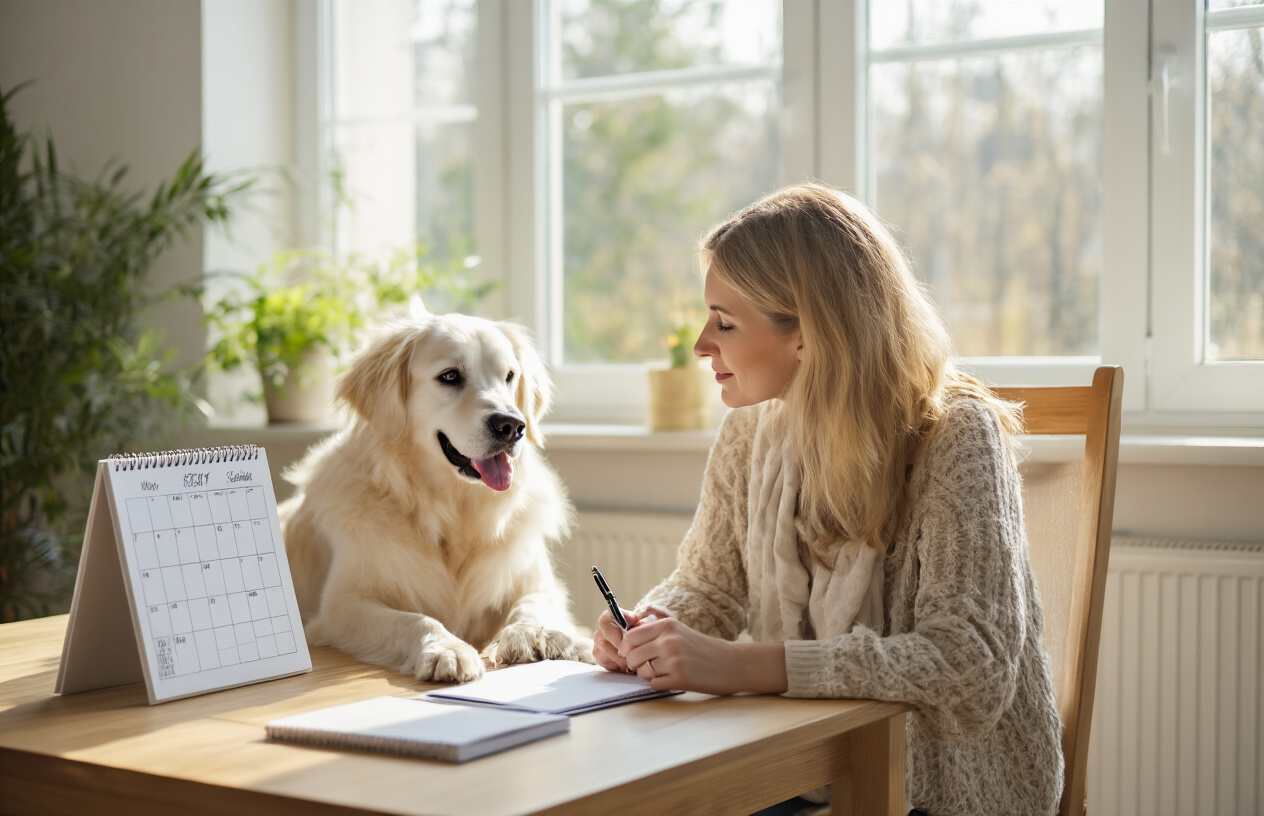
Keep sessions short but frequent for better retention
Dogs learn best when training sessions are brief but happen regularly throughout the day. Think of it like teaching a child – cramming hours of information at once rarely sticks, but small, repeated lessons build lasting knowledge. Aim for 5-10 minute sessions that end on a positive note, leaving your dog eager for the next training opportunity.
Most dogs start losing focus after 10-15 minutes, so shorter sessions prevent mental fatigue and frustration. Instead of one exhausting 30-minute marathon, break it into three energetic 10-minute sessions spread across the day. This approach aligns with how dogs naturally process information and creates multiple opportunities for success.
The magic happens in repetition. When you practice the same command multiple times throughout the day, it moves from short-term memory into long-term retention. Your dog begins associating the behavior with various contexts and times, making the training more reliable in different situations.
Train during your dog’s most alert and focused times
Every dog has natural energy peaks when they’re most receptive to learning. Pay attention to when your dog seems most engaged and responsive – this is your golden training window. For many dogs, this happens right after meals when they’re satisfied but not sleepy, or during their natural play periods.
Morning sessions often work well because dogs wake up refreshed and ready to engage. Avoid training immediately after intense exercise when your dog might be too tired to concentrate, or right before meal times when hunger becomes the primary distraction. Some dogs also have afternoon energy bursts that make excellent training opportunities.
Watch for signs that your dog is in the right mindset: ears forward, tail in a neutral or happy position, and responsive to your voice. If your dog seems distracted, overly excited, or lethargic, wait for a better moment. Quality attention beats forced participation every time.
Build consistency with daily 5-minute practice routines
Creating a daily 5-minute routine transforms dog training from an occasional activity into a natural part of your lifestyle. Pick the same time each day – maybe right after your morning coffee or before dinner prep – and stick to it. This predictability helps both you and your dog develop training as a habit rather than a chore.
Start each 5-minute session with a simple warm-up command your dog already knows well. This builds confidence and gets their brain engaged before moving to newer or more challenging behaviors. Use the middle portion to work on your current training goal, and always end with something fun and successful.
These short daily sessions compound over time, creating remarkable progress. A dog that practices sit-stay for 5 minutes daily will master the command faster than one that gets 35 minutes of training once a week. Consistency beats intensity when it comes to effective dog training methods.
Track your daily sessions to maintain accountability. Whether you use a simple calendar check-off or a phone app, recording your consistency helps identify patterns and keeps you motivated during busy periods.
Address Problem Behaviors Before They Become Habits
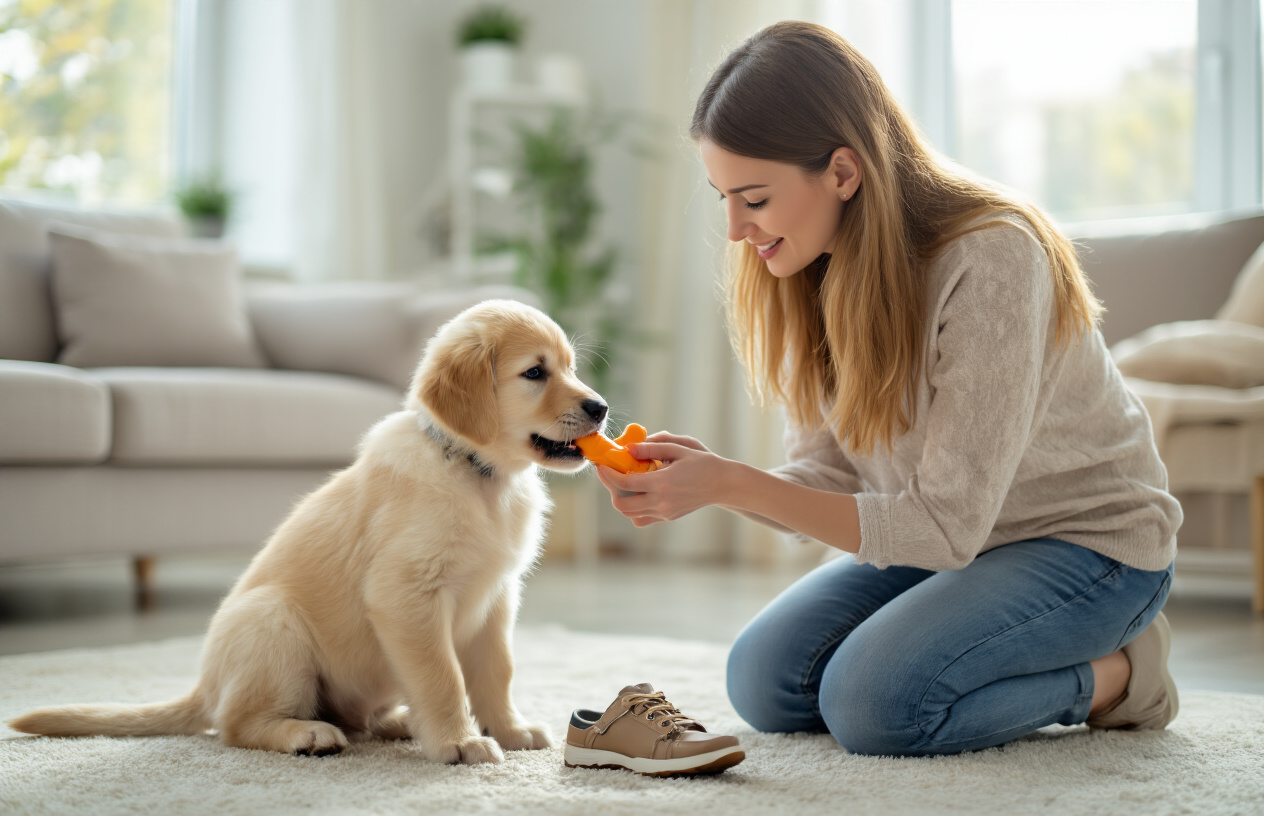
Redirect Unwanted Actions Toward Acceptable Alternatives
When your dog jumps on guests, chews your favorite shoes, or barks excessively, your first instinct might be to simply say “no.” But here’s what works better: giving your dog something else to do instead. This approach, called redirection, taps into your dog’s natural desire to please while channeling their energy productively.
If your dog loves to dig in your flower beds, create a designated digging area in your yard filled with soft soil or sand. Hide treats and toys there to make it irresistible. When you catch them heading for the forbidden flowers, cheerfully guide them to their special spot and praise them for digging there.
The same principle applies to excessive barking. Instead of shouting over your dog’s noise, teach them a “quiet” command paired with an alternative behavior like sitting or going to their bed. Start practicing during calm moments, then gradually work up to more exciting situations.
Chewing problems respond well to this dog training technique too. Remove tempting items from reach, then flood your space with appropriate chew toys. When you spot inappropriate chewing starting, immediately offer an acceptable alternative and celebrate when they make the switch.
Remove Triggers That Encourage Bad Behavior
Smart dog behavior training means looking at your environment like a detective. What’s setting your dog up to fail? Sometimes the simplest changes make the biggest difference in your training success.
If your dog raids the trash can, don’t just scold them—get a lid that locks or move the can somewhere inaccessible. Counter-surfing happens because food sits within reach, so clear those surfaces or use baby gates to block kitchen access during meal prep.
For dogs who bolt out the front door, create a physical barrier like a baby gate at your entryway. This gives you time to put on their leash before opening the main door. Window reactivity often improves dramatically when you simply block your dog’s view of passing triggers with frosted film or by rearranging furniture.
Resource guarding around food bowls can be managed by feeding dogs in separate rooms or crates. This prevents competition and reduces stress for everyone involved. Many behavioral problems stem from dogs feeling overwhelmed or overstimulated, so creating calm spaces and removing unnecessary stressors often resolves issues naturally.
Never Use Punishment-Based Methods That Damage Trust
Yelling, hitting, or using shock collars might seem like quick fixes, but they create more problems than they solve. These methods damage the trust between you and your dog, often making behavioral issues worse or creating new ones like fear and aggression.
Positive reinforcement dog training builds confidence and strengthens your relationship. When dogs learn through rewards and encouragement, they become eager partners in the training process rather than fearful participants trying to avoid punishment.
Punishment-based methods can also create what trainers call “learned helplessness,” where dogs shut down emotionally and stop trying to learn new behaviors. This makes future training much more difficult and can harm your dog’s overall well-being.
Instead of focusing on what your dog did wrong, celebrate what they do right. Catch them being good and reward those moments enthusiastically. This creates a positive feedback loop where your dog actively seeks out behaviors that earn them praise and treats.
Seek Professional Help for Persistent Behavioral Issues
Some problems require expertise beyond basic dog training tips. If your dog shows aggression, severe anxiety, or compulsive behaviors that don’t improve with consistent training, it’s time to call in a professional.
Look for certified trainers who use science-based, positive methods. Avoid anyone who guarantees quick fixes or relies heavily on dominance-based theories. Good trainers will want to meet your dog, assess the situation thoroughly, and create a customized plan.
Professional dog training becomes especially valuable when safety is a concern or when problems affect your dog’s quality of life. Separation anxiety, for example, can cause dogs genuine distress and may require medication alongside behavior modification.
Don’t wait until problems become severe. Early intervention with a qualified professional often prevents minor issues from becoming major behavioral challenges that are much harder to address later.
Build Impulse Control Through Patience Exercises
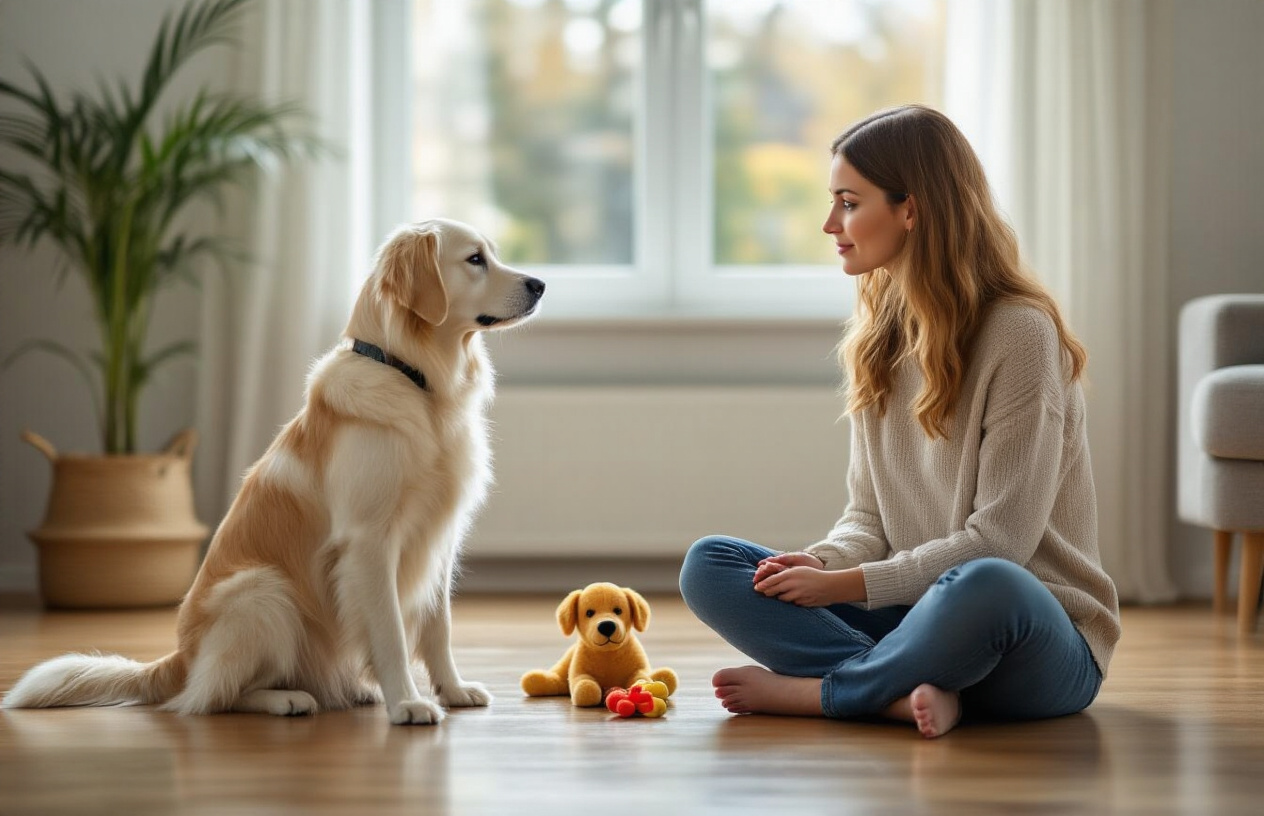
Teach the “wait” command before meals and doorways
Your dog’s natural excitement around food and doorways creates perfect training opportunities for building self-control. The “wait” command transforms these high-energy moments into powerful learning experiences that strengthen your dog’s ability to resist impulses.
Start with mealtime training by holding your dog’s food bowl while they’re in a sitting position. Say “wait” in a calm, firm voice and slowly lower the bowl toward the ground. If your dog lunges forward or breaks position, immediately lift the bowl back up and reset. Only place the bowl down when your dog maintains their sit and shows patience. Release them with a clear “okay” command to signal they can eat.
Apply the same principle at doorways, which naturally trigger excitement and rushing behavior. Before opening any door, have your dog sit and wait. Place your hand on the door handle and say “wait.” If they start to move forward, step back and restart the process. Open the door gradually – just a crack at first. Your dog should remain seated until you give the release command.
Practice these dog training techniques daily for consistency. Most dogs master the basic wait command within a week of regular practice, but building strong impulse control takes several months of reinforcement.
Practice controlled greetings with visitors
Jumping on guests ranks among the most common behavioral issues dog owners face, yet it’s completely preventable with proper impulse control training. Controlled greetings teach your dog that calm behavior gets them attention while jumping results in ignored greetings.
Set up practice sessions with family members or cooperative friends who understand your training goals. Have your visitor enter through the front door while your dog is on a leash beside you. The moment your dog pulls toward the guest or attempts to jump, immediately create distance by stepping backward or having the visitor turn away.
Your dog should learn this simple rule: four paws on the ground equals attention and petting, while jumping equals no interaction. Coach your visitors to completely ignore jumping behavior – no eye contact, no verbal corrections, no pushing the dog down. These reactions actually reward the behavior with attention.
When your dog maintains a sit or calm standing position, reward them immediately with praise and allow the controlled greeting to proceed. Keep initial greetings brief – just 10-15 seconds – then redirect your dog to a different activity. This prevents over-excitement and maintains the calm energy you’ve worked to establish.
Use the “leave it” command to prevent resource guarding
Resource guarding behaviors develop when dogs feel anxious about losing valuable items, whether food, toys, or even their favorite sleeping spots. The “leave it” command creates a foundation of trust and communication that prevents these territorial behaviors from escalating into serious problems.
Begin training “leave it” with low-value items your dog shows mild interest in, not their favorite toys or treats. Place an object on the ground and when your dog approaches it, say “leave it” and immediately redirect their attention to you with a high-value treat. The key is rewarding them for choosing to focus on you instead of the forbidden item.
Progress to more challenging scenarios by practicing with food. Hold a treat in your closed fist and let your dog sniff and paw at your hand. Say “leave it” and wait for them to back away or stop trying to get the treat. The moment they disengage, mark the behavior with “good” and reward with a different treat from your other hand.
Advanced dog obedience training involves practicing “leave it” during meals and with dropped food. Dogs who master this command develop confidence that their resources aren’t under threat, reducing the anxiety that drives guarding behaviors. This effective dog training method builds trust between you and your dog while establishing clear boundaries around household items and food.
Socialize Your Dog for Confident Public Behavior
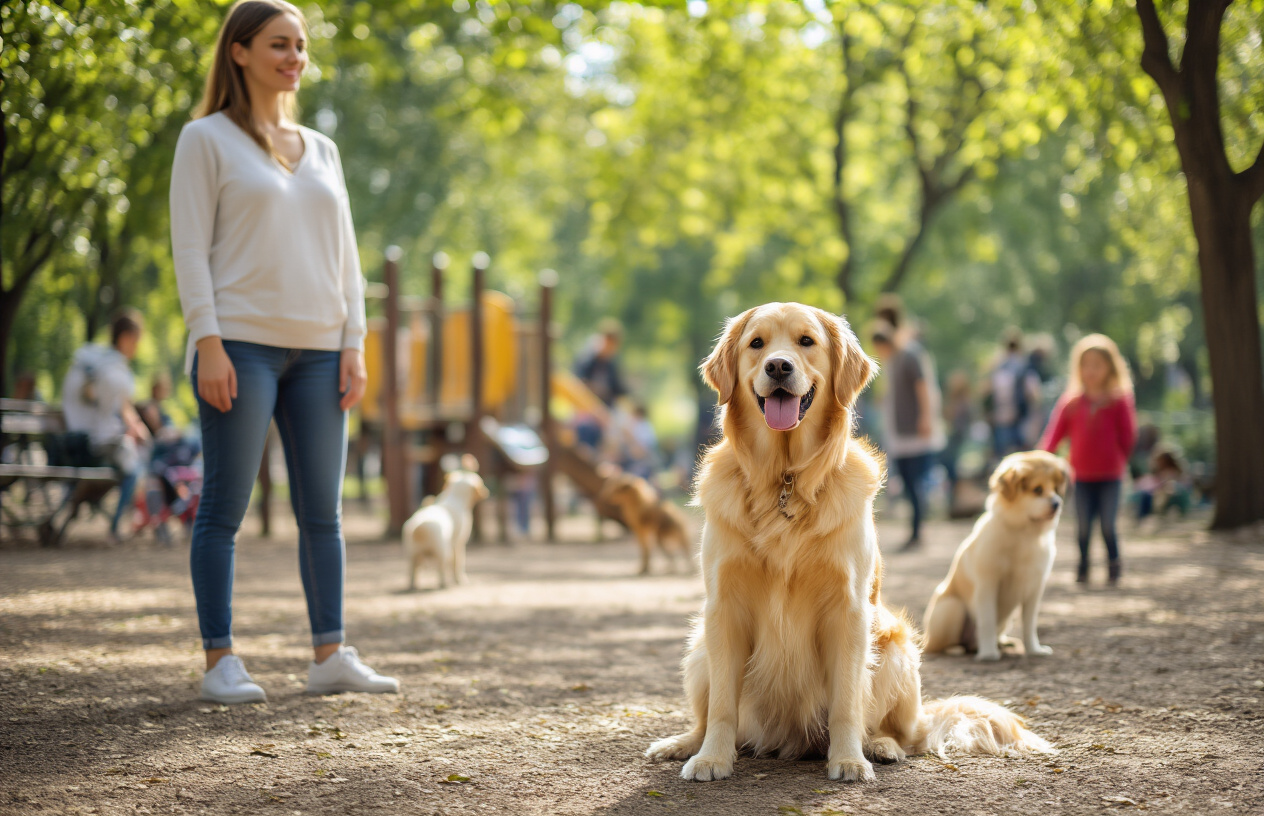
Expose your puppy to various people and situations early
The window for optimal puppy socialization closes around 16 weeks of age, making early exposure absolutely critical for your dog’s future confidence. During this period, your puppy’s brain is like a sponge, absorbing every new experience and forming lasting impressions about the world around them. Take your puppy to different locations like parks, busy sidewalks, pet stores, and outdoor cafes where they can encounter diverse sights, sounds, and smells.
Introduce your puppy to people of all ages, ethnicities, and appearances. Children in strollers, elderly people with walkers, individuals wearing hats or uniforms, and people carrying umbrellas or bags should all become familiar figures. Each positive interaction builds your dog’s social database and reduces the likelihood of fear-based reactions later in life.
Don’t forget about environmental sounds and surfaces. Expose your puppy to car engines, construction noise, vacuum cleaners, and other household sounds at low volumes initially. Walk on different textures like grass, concrete, gravel, and wooden decks to build confidence with various surfaces.
Create positive associations with new experiences
Every new experience should come paired with something your dog loves. Carry high-value treats, favorite toys, or engage in brief play sessions immediately after introducing something unfamiliar. This dog training technique transforms potentially scary encounters into exciting opportunities.
When your dog sees a motorcycle for the first time and you immediately offer their favorite treat, their brain starts connecting motorcycles with good things happening. This positive reinforcement dog training approach works better than simply hoping your dog won’t be afraid.
Time your rewards carefully. The treat should come the moment your dog notices the new stimulus, not after they’ve already become anxious or overstimulated. Watch your dog’s body language closely – relaxed ears, soft eyes, and loose body posture indicate they’re ready for the reward.
Practice calm behavior around other dogs and distractions
Teaching your dog to remain composed around other dogs requires structured practice sessions in controlled environments. Start with calm, well-behaved dogs at a distance where your dog notices them but doesn’t become overly excited or reactive.
Reward your dog for simply looking at other dogs without lunging, barking, or becoming fixated. Use a marker word like “yes” or a clicker the instant your dog glances at another dog and then looks back at you. This dog behavior training method teaches them that other dogs are interesting but you’re more rewarding.
Practice the “watch me” command in increasingly distracting environments. Begin in your quiet living room, then move to your backyard, a quiet park, and eventually busier locations. Your dog should learn that focusing on you pays off regardless of what’s happening around them.
| Training Location | Distraction Level | Success Criteria |
|---|---|---|
| Home | Low | Maintains focus for 10 seconds |
| Backyard | Medium | Responds to name within 3 seconds |
| Quiet park | High | Sits calmly while other dogs pass |
| Busy park | Very High | Walks on loose leash past multiple distractions |
Gradually increase challenge levels as confidence grows
Building confidence works like physical exercise – you need to progressively increase intensity to see improvement. Once your dog masters calm behavior in low-distraction environments, slowly add more challenging elements to their training sessions.
Start with one distraction at a time. If your dog can sit calmly while one person walks by, try having two people walk by in opposite directions. If they handle that well, add a jogger or someone walking a dog. This systematic approach prevents overwhelming your dog while steadily building their confidence.
Monitor your dog’s stress signals throughout this process. Panting when it’s not hot, excessive drooling, trembling, or refusing treats are signs you’re pushing too fast. Step back to an easier level and spend more time building confidence there before advancing again.
Create a training log to track your dog’s progress with different scenarios. Note which situations cause stress and which ones your dog handles easily. This information helps you plan future training sessions and ensures you’re always working at the right challenge level for your dog’s current abilities.
Professional dog training tips suggest ending each session on a positive note, even if that means returning to an easier exercise your dog can successfully complete.
Use Environmental Management to Set Your Dog Up for Success
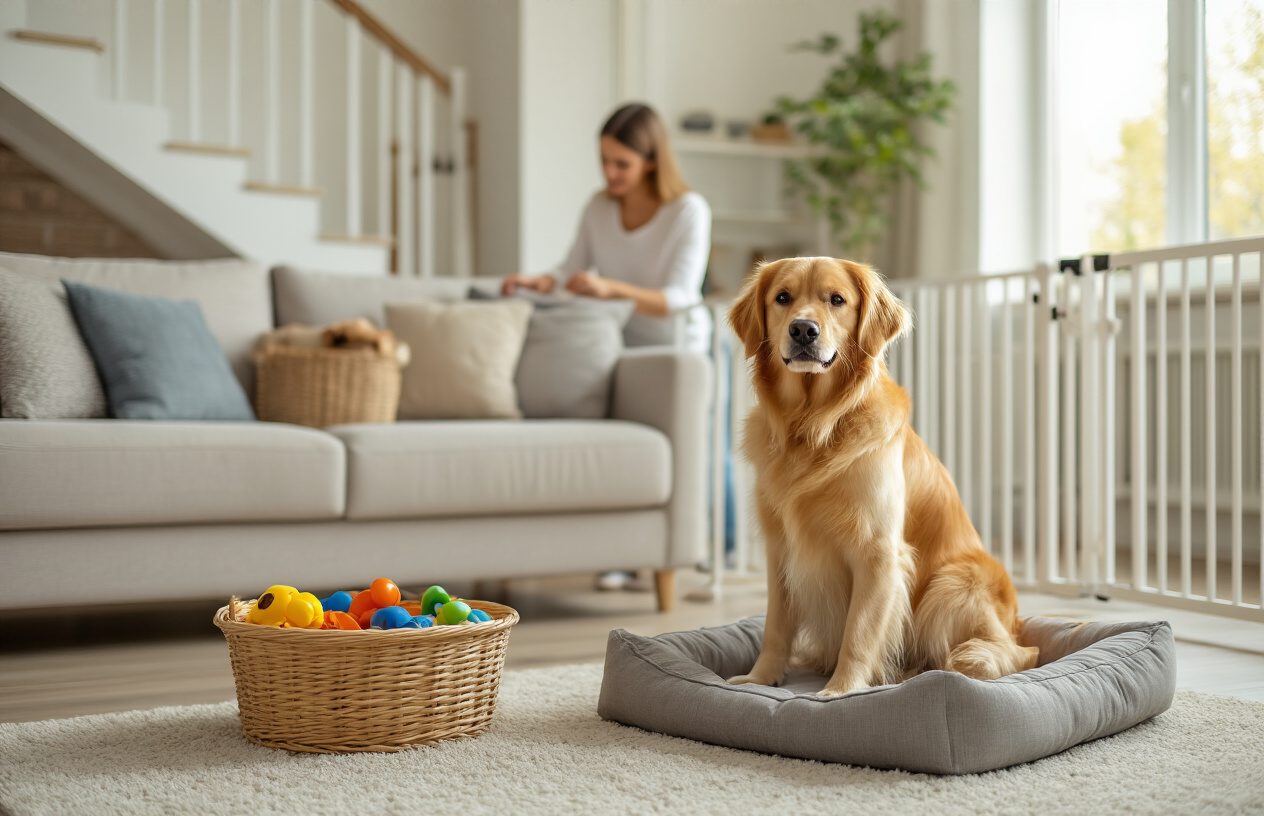
Remove Temptations During the Learning Phase
Your dog’s environment plays a huge role in training success. When teaching new behaviors, eliminate distractions and temptations that could derail progress. Put away shoes, remote controls, and other items your dog likes to chew. Close doors to rooms where accidents typically happen or where forbidden behaviors occur.
Think of it like studying for an exam – you wouldn’t leave your phone, TV, and favorite snacks within arm’s reach. The same principle applies to dog training techniques. Create a clean slate where your dog can focus solely on learning the desired behavior without competing impulses.
During house training, remove access to carpeted areas where accidents are likely. When working on “leave it” commands, clear countertops of food items. This approach sets your dog up for success rather than failure, making effective dog training methods more productive and less frustrating for everyone involved.
Create Designated Spaces for Appropriate Behaviors
Smart dog training tips include establishing specific areas where your dog knows certain behaviors are welcome. Set up a comfortable spot near the front door where your dog should sit when visitors arrive. Create a designated eating area with proper bowls and mats to encourage calm mealtime behavior.
Puppy training guide experts recommend establishing a specific potty area outdoors and consistently taking your dog to that same spot. This helps build strong associations between location and appropriate behavior. Similarly, create a cozy sleeping area where your dog learns to settle and relax on command.
| Space Type | Appropriate Behaviors | Training Benefits |
|---|---|---|
| Entry Area | Sitting, calm greetings | Prevents jumping on guests |
| Feeding Station | Quiet eating, waiting | Reduces food guarding |
| Sleep Zone | Resting, settling | Promotes impulse control |
| Play Area | Active behaviors | Channels energy appropriately |
Establish Clear Boundaries Within Your Home
Dog behavior training becomes much easier when your dog understands household rules and boundaries. Use baby gates to block access to certain rooms during training periods. This prevents your dog from practicing unwanted behaviors in spaces where you can’t supervise.
Create visual and physical boundaries that communicate expectations clearly. Dog beds, crate areas, and designated play zones help your dog understand where different behaviors are appropriate. Consistency in maintaining these boundaries reinforces your dog obedience training efforts.
Professional dog training tips emphasize that boundaries aren’t about restriction – they’re about clarity. When your dog knows exactly what’s expected in each area of your home, anxiety decreases and confidence grows. This environmental structure supports all other training efforts and helps maintain long-term behavioral improvements.
Maintain Your Dog’s Focus During Distracting Situations
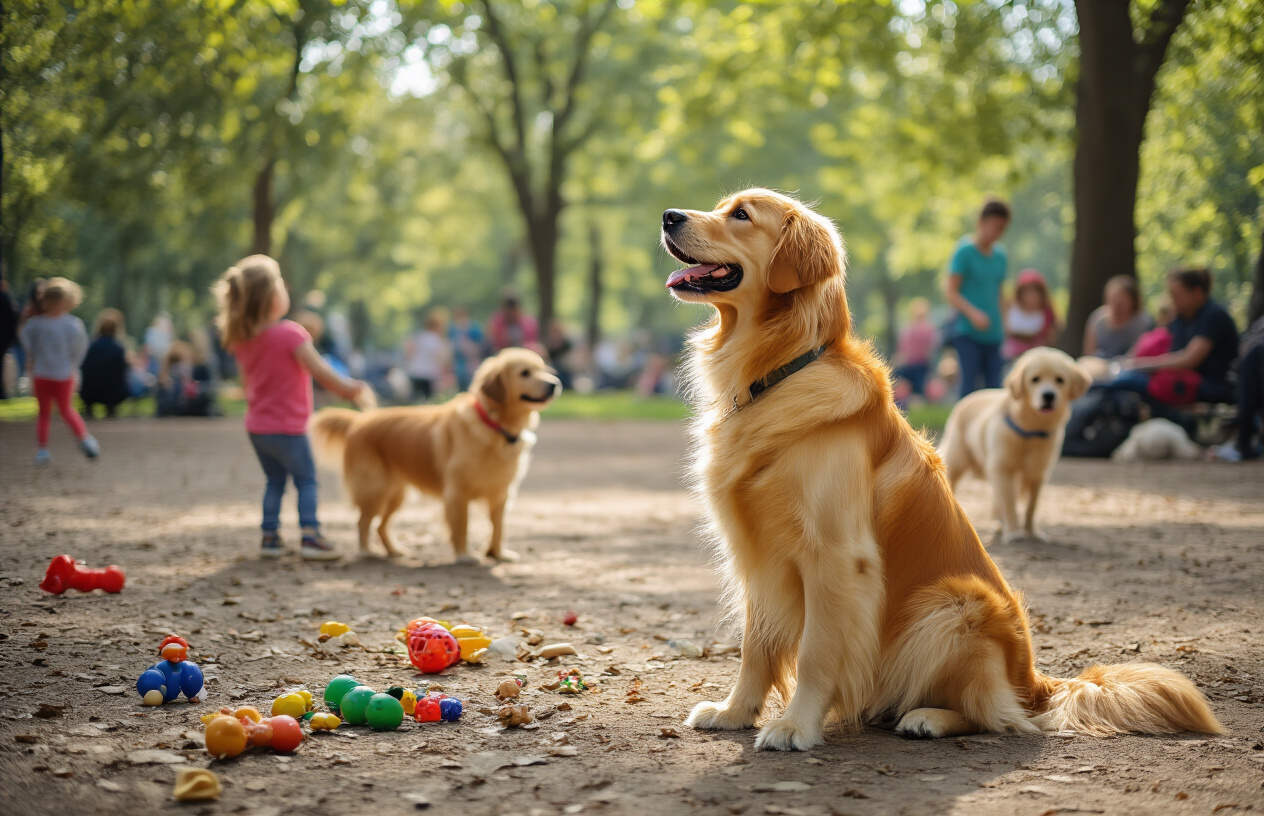
Start training in quiet environments before adding distractions
Building your dog’s focus starts with creating the perfect learning environment. Think of it like teaching a child to read – you wouldn’t start in a noisy playground. Choose a familiar, quiet room in your house where your dog feels comfortable and relaxed. This controlled setting allows your pet to concentrate on you and the training without competing sounds, smells, or visual stimuli pulling their attention away.
During these initial sessions, your dog learns to associate training time with focused attention on you. They begin to understand that when you’re working together, you become the most interesting thing in their world. This foundation becomes incredibly valuable when you later add challenges to your dog training routine.
Keep these early sessions short but frequent – about 5 to 10 minutes several times throughout the day works better than one long session. Your dog’s attention span develops gradually, and these bite-sized training moments prevent mental fatigue while building positive associations with learning.
Use higher value rewards in challenging situations
When distractions increase, so should your rewards. Regular kibble might work fine during quiet kitchen training, but it won’t compete with the excitement of a squirrel running by or children playing in the park. High-value treats are your secret weapon for maintaining your dog’s attention when the environment becomes more stimulating.
High-value rewards vary by dog, but typically include small pieces of cooked chicken, cheese, freeze-dried liver, or commercial training treats with strong scents and flavors. The key is finding what makes your dog’s eyes light up and their tail wag with enthusiasm.
| Low Distraction Environment | High Distraction Environment |
|---|---|
| Regular kibble or basic treats | Premium treats (chicken, cheese) |
| Verbal praise | Enthusiastic praise + treats |
| Simple petting | Favorite toy as reward |
Save these special rewards exclusively for training sessions, especially when working around distractions. This scarcity makes them even more valuable to your dog and helps maintain their motivation to focus on you instead of the exciting world around them.
Practice the “look at me” command for attention redirection
The “look at me” command becomes your most powerful tool for regaining your dog’s attention during distracting moments. This simple cue teaches your dog that checking in with you pays off, creating a habit of voluntary attention that strengthens your bond and improves overall obedience training.
Start teaching this command during your quiet training sessions. Hold a treat near your eyes and say “look at me” or “watch me.” The moment your dog makes eye contact, mark the behavior with “yes” or a clicker, then immediately reward. Repeat this process until your dog consistently looks at your face when they hear the cue.
Practice this command throughout your daily routine – before meals, during walks when nothing exciting is happening, and during calm moments at home. The more your dog practices looking at you on cue, the stronger this behavior becomes. Eventually, you’ll be able to use this command to redirect their attention from distractions like other dogs, interesting smells, or sudden noises.
Gradually increase distraction levels as skills improve
Building distraction tolerance works like physical fitness training – you start light and progressively increase the challenge. Once your dog masters basic commands in quiet environments and responds reliably to the “look at me” cue, you’re ready to add mild distractions.
Begin with predictable, controllable distractions. Have a family member walk through the room during training, turn on the television at low volume, or practice near a window where your dog might see mild outdoor activity. If your dog maintains focus and responds to commands, reward generously and gradually make things more challenging.
Move your training sessions to different rooms, then to your backyard, then to quiet areas of your neighborhood. Each successful session at one level prepares your dog for the next challenge. If your dog struggles at any level, don’t push forward – return to the previous level where they were successful and spend more time building confidence.
The progression might look like: quiet room → room with family activity → backyard → front yard → quiet street → busier street → dog park entrance. This systematic approach ensures your dog develops genuine focus skills rather than becoming overwhelmed by too much stimulation too quickly.
Remember that some days your dog might handle more distractions than others, just like people have good and bad days. Stay flexible with your expectations while maintaining consistent training techniques that set both you and your dog up for long-term success.
Track Progress and Adjust Your Training Approach
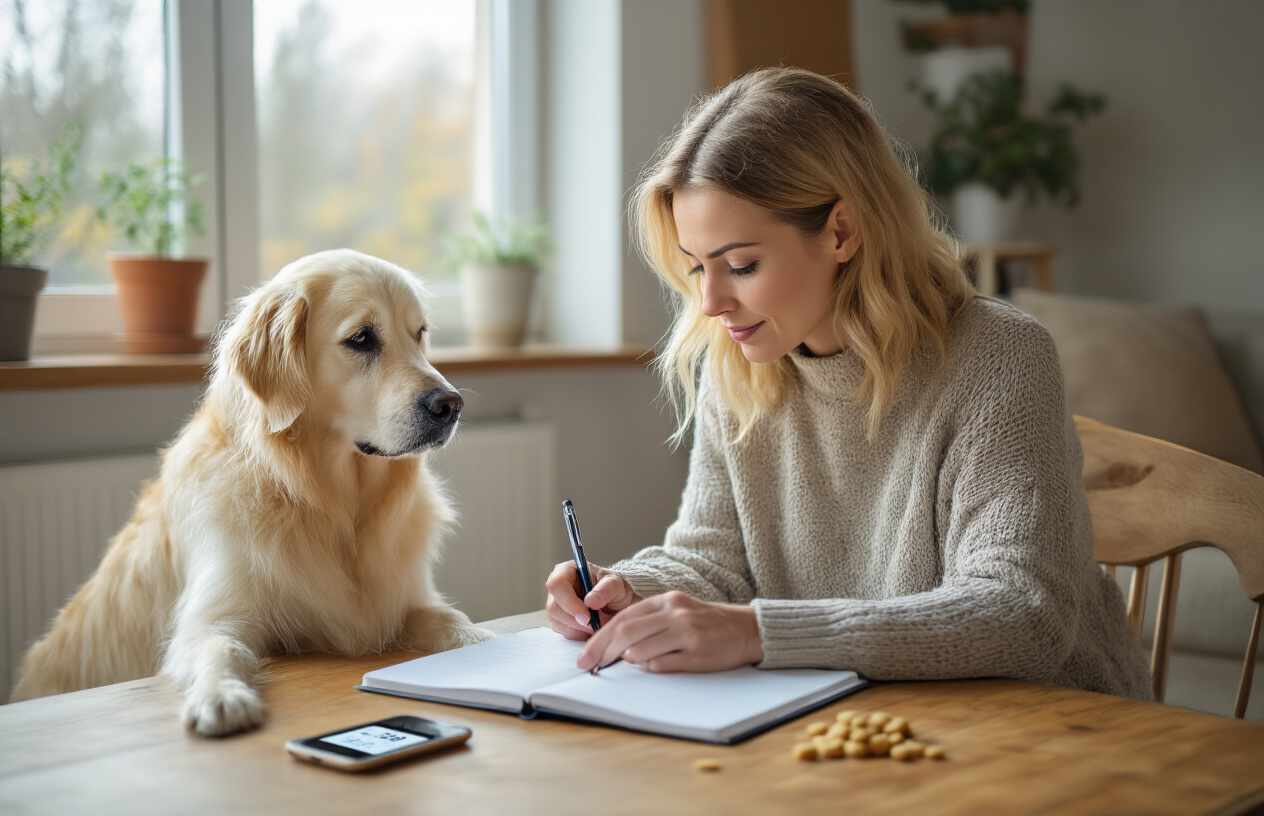
Keep a Simple Training Log to Identify Patterns
Documentation transforms guesswork into strategic dog training techniques. A basic training journal reveals which methods work best for your dog and when progress stalls. Record the date, time, command practiced, your dog’s response, and environmental factors like distractions or energy levels.
Track both successes and challenges. Maybe your dog masters “sit” quickly in the kitchen but struggles in the backyard. This pattern shows environmental influence on learning. Note if certain times of day yield better results – many dogs focus better after exercise or before meals.
Your log doesn’t need complexity. A simple notebook or smartphone app works perfectly. Include treats used, training duration, and your dog’s mood. After two weeks, patterns emerge that guide smarter training decisions.
Celebrate Small Victories to Maintain Motivation
Recognizing incremental progress keeps both you and your dog engaged in the training process. Every small step deserves acknowledgment – holding a sit for three seconds longer, walking past a distraction without pulling, or responding to their name faster.
Create celebration rituals that mark achievements. Special treats, extra playtime, or enthusiastic praise signal to your dog that they’re succeeding. This positive reinforcement dog training approach builds confidence and eagerness to learn.
Document these victories in your training log. Seeing written proof of improvement combats frustration during challenging periods. Your dog might not master “stay” in one session, but they’re definitely improving from where they started.
Modify Techniques Based on Your Dog’s Learning Style
Dogs learn differently, just like people. Visual learners respond well to hand signals alongside verbal commands. Some dogs prefer food rewards while others work harder for toy play or attention. Kinesthetic learners need movement incorporated into training sessions.
Watch your dog’s preferences closely. High-energy breeds often need shorter, more frequent sessions. Sensitive dogs require gentler approaches, while confident dogs might handle more challenging exercises sooner. Age also influences learning style – puppies have shorter attention spans but absorb information quickly.
Experiment with different approaches when progress slows. Switch from verbal cues to visual signals, change reward types, or adjust session length. Professional dog training tips often emphasize flexibility – rigid approaches rarely work for every dog.
Set Realistic Goals and Timelines for Complex Behaviors
Complex behaviors require breaking down into manageable steps. Teaching “roll over” involves several component skills: lie down, turn head to side, follow treat over shoulder, complete the roll, and return to starting position. Each step needs mastery before advancing.
Create reasonable timelines based on behavior complexity and your dog’s learning pace. Basic commands like “sit” might take a few days, while impulse control exercises could require weeks of consistent practice. Rushing leads to confusion and setbacks.
Adjust expectations based on your dog’s breed, age, and temperament. Working breeds often learn commands quickly but need mental stimulation to prevent boredom. Toy breeds might take longer to build confidence but excel at detail-oriented tasks. Senior dogs learn new behaviors but may need more repetition than younger dogs.

Training your dog doesn’t have to feel overwhelming when you focus on these proven strategies. From using positive reinforcement to create faster learning to establishing clear communication through consistent commands, each secret builds on the others to create a well-behaved companion. The key is timing your rewards perfectly, sticking to a structured schedule, and catching problem behaviors early before they become deeply rooted habits.
Remember that building impulse control takes patience, and proper socialization will give your dog the confidence they need in public spaces. Set your pup up for success by managing their environment, keeping their attention even when distractions arise, and always tracking what’s working so you can adjust your approach. Start with just one or two of these techniques today, and you’ll be amazed at how quickly your dog responds to your consistent, positive guidance.

